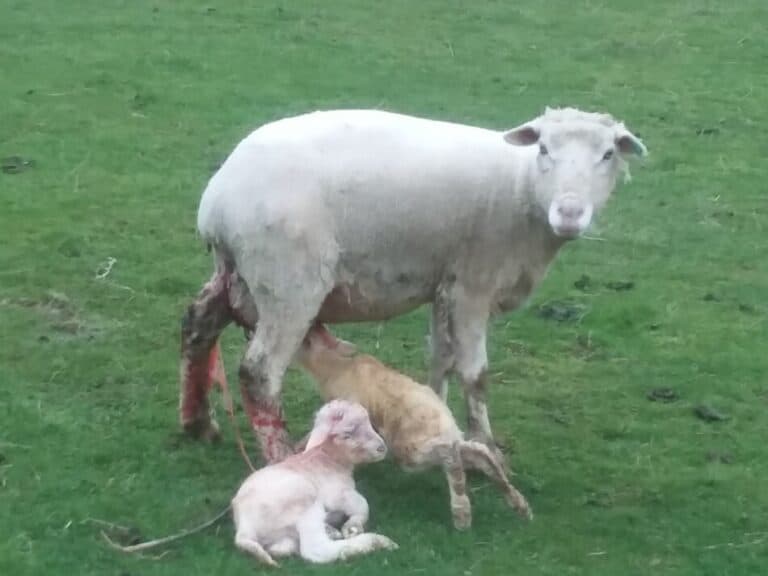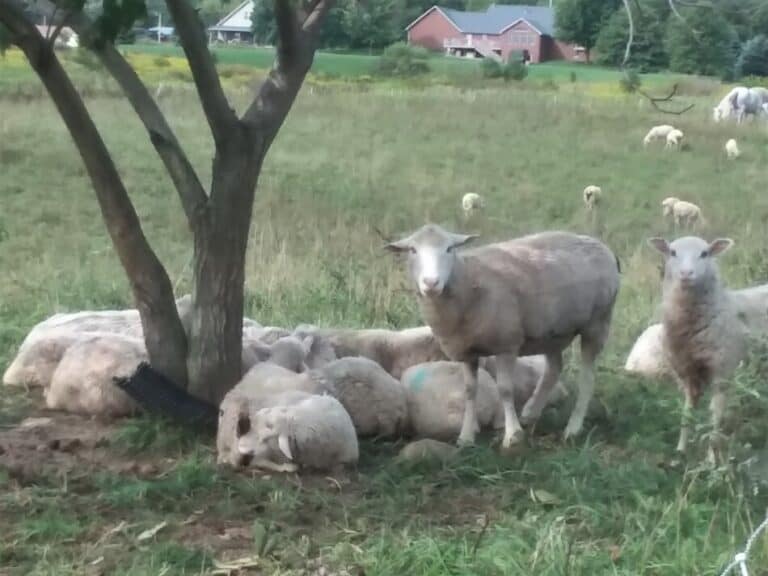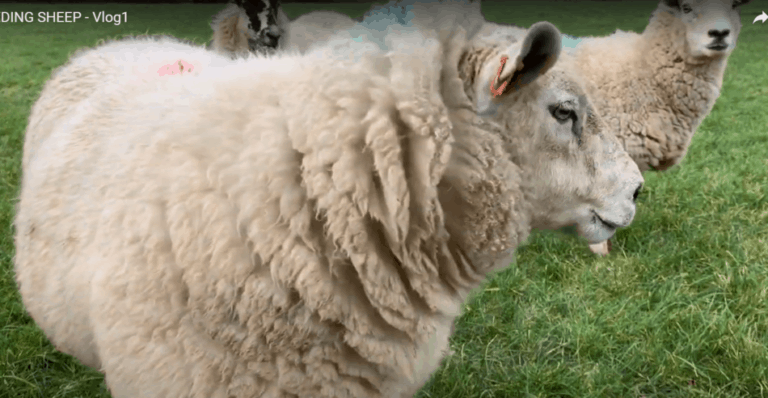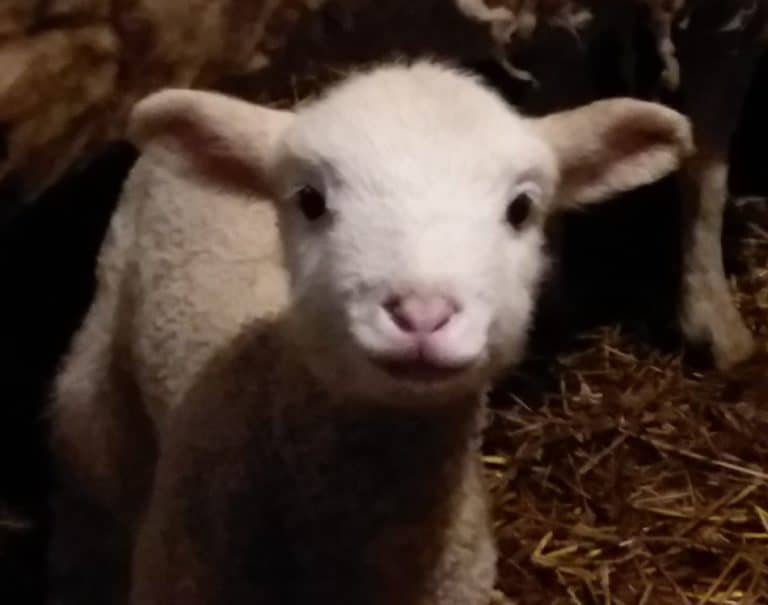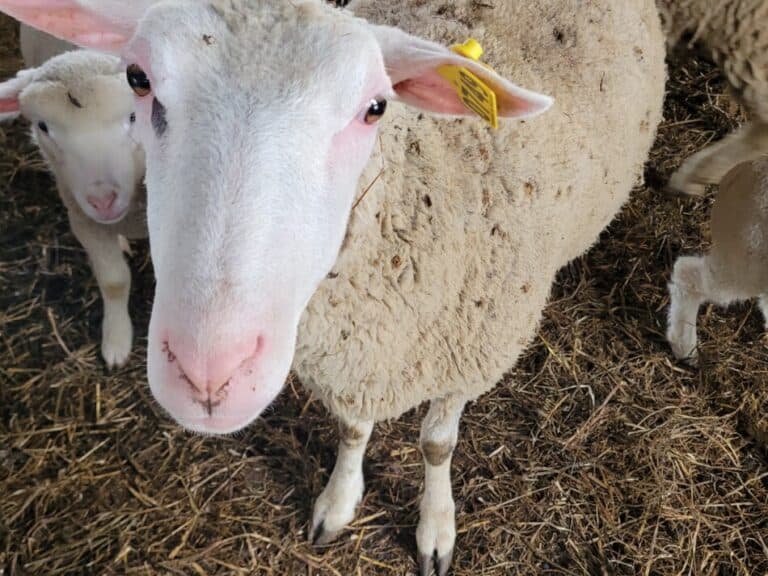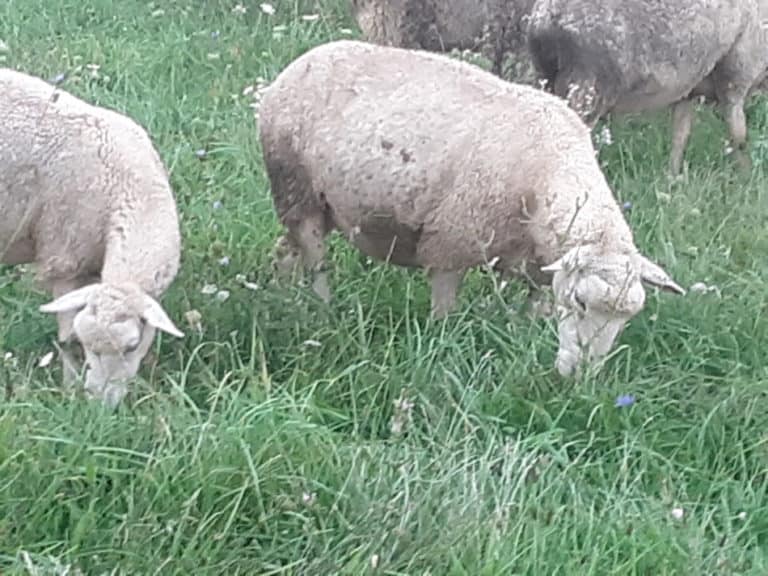9 Things Dorper Sheep Are Known For
Dorper sheep have come on strong as a top breed for producing market lambs in the country. If there are a few sheep raisers in your area, chances are you have a Dorper flock or two pretty close to home.
With so many breeds of sheep available, what is it about the Dorper that makes it the breed of choice for so many folks getting into sheep?
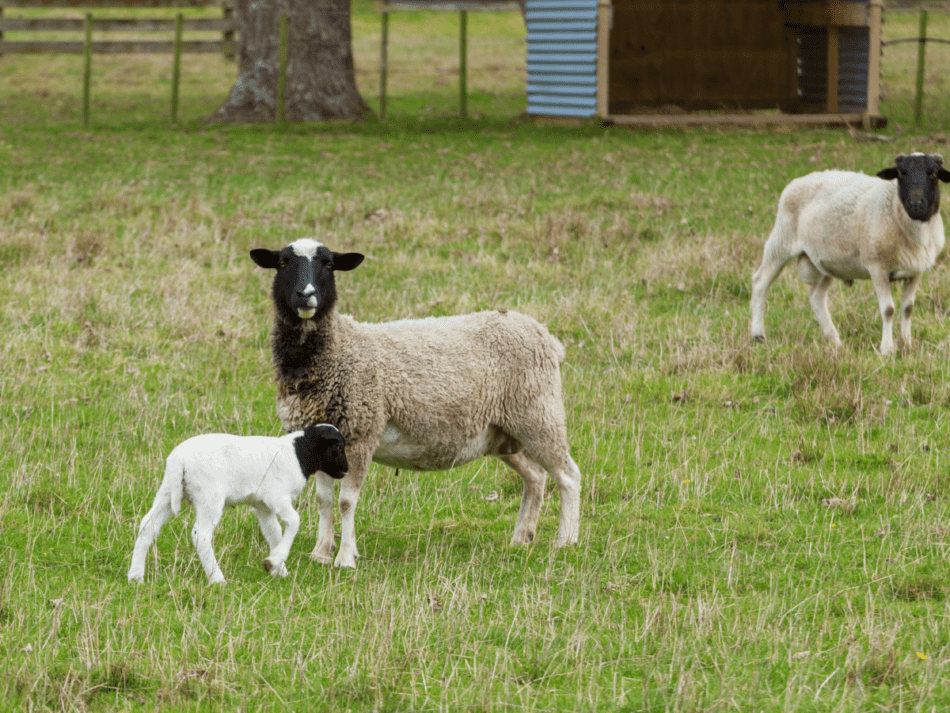
Dorper sheep have meaty lambs
Dorper lambs seem to be well grown and gain well, for producing roaster (also called hothouse) type lambs as well as more traditionally sized market lambs.
A live weight of about 36 kg can be reached by the Dorper lamb at the age of 3-4 months.
Oklahoma State University Dorper Sheep
In case you are not aware of it, the meatiness of a lamb is genetic, carcass traits are highly heritable. This is the whole “like produces like” idea. Meaty parents get you meaty lambs, if they are all well managed.
Many folks who want to get started with a small flock of meaty sheep find that Dorper and Dorper cross breeding stock will produce lambs that are well suited to their farm.
Best Breeds of Sheep for Meat is my article that gives you some great sheep to consider raising for meat, one of which is the Dorper.
Dorper lambing percentage is 150%
The lambing percentage for a Dorper flock is 150% under good conditions. For first time lambers or a flock with a high number of first timers, the lambing percentage is going to be closer to 120%.
These numbers are for intensive lambing, which means the shepherd supervises and provides help, probably in the form of lambing jugs and being in a barn at least for when the lambs are young.
For extensive lambing, lambing outdoors or on pasture, the lambing percentage drops to about 100%.
In a year round breeding schedule, the Dorper can produce three sets of lambs in two years which makes the lambing percentage per year to be at or over 200% (2.25 lambs on an annual basis).

Dorper sheep are an easy care breed
Dorper sheep are an easy care breed, which mainly means no shearing.
Since sheep are hard to find in some areas, shearing can also be a challenge for small flock owners, but not if you have Dorpers, which shed.
It is important to note that some Dorpers do not fully shed out and still require some shearing, which would defeat the purpose of having this breed if avoiding shearing is your main concern.
Be sure to choose stock from a flock that does not shear at all if you do not want to shear either!
Most Dorpers would still need to have other care, like feet trimming, vaccinations or deworming, just like other sheep.
The reason I am pointing this out is that they may be easy care, but that is different than no care, all domestic sheep need you in some capacity, including Dorpers.
Are Sheep Easy Keepers? 4 things you have to get right! is my article giving you a basic overview of the things that make a flock easy to keep.
Dorper sheep come in two colors
Dorper sheep come in two basic colors, a black headed version or an all white version.
There should be no difference between the black headed and white headed Dorper in conformation or performance, the difference is just whether or not the head and neck are black.
Dorpers can lamb out of season
Dorpers can lamb out of season since they have an extended breeding season.
This means that, with appropriate management, you can have your Dorper flock lamb 3 times in 2 years resulting in more like 200+% lambs per year since you are lambing every 8 months.
What Sheep Can Breed Year Round? is my article that gives you some commonly available breeds of sheep that can breed year round, which includes Dorper.
If you did not want to be that intensive with your flock, you could still move the lambing window up or back to suit your farm plan, like a specific market niche or holiday you are hoping to hit.
For instance, if you were interested in producing lambs to sell every 4 months, you could split your flock into breeding groups and get more use out of your facilities by lambing multiple times per year.
While this does give you more lambing work to do, it also gives you more opportunities to get income from your sheep by having for sale lambs every 3-4 months rather than just once a year.
University of Florida Sheep Breeds has a break down of the main hair sheep breeds and their characteristics, scroll down a touch for the Dorper section.
Dorpers are heat and insect tolerant
Sheep generally have trouble dealing with the stress of being in the heat but hair sheep seem to be able to handle heat better than most wool sheep.
Because of their Blackhead Persian origin, Dorpers have natural tolerance to high temperatures and heavy insect populations. They are productive in areas where other breeds barely survive.
American Dorper Sheep Breeders Society
Hair sheep come from hot or tropical parts of the world, this is why they tend to have extended breeding seasons and have the ability to handle heat and insects, it was needed when the breed developed.
If you live in an area where heat stress is a common problem for livestock, choosing one of the hair sheep breeds, like Dorper, will give you a leg up on dealing with local conditions.
Heat tolerance isn’t exclusively for areas known to be hot.
For example, we live in Ohio and adding in or switching to heat tolerant genetics would help the flock deal with one of the more difficult times of the year.
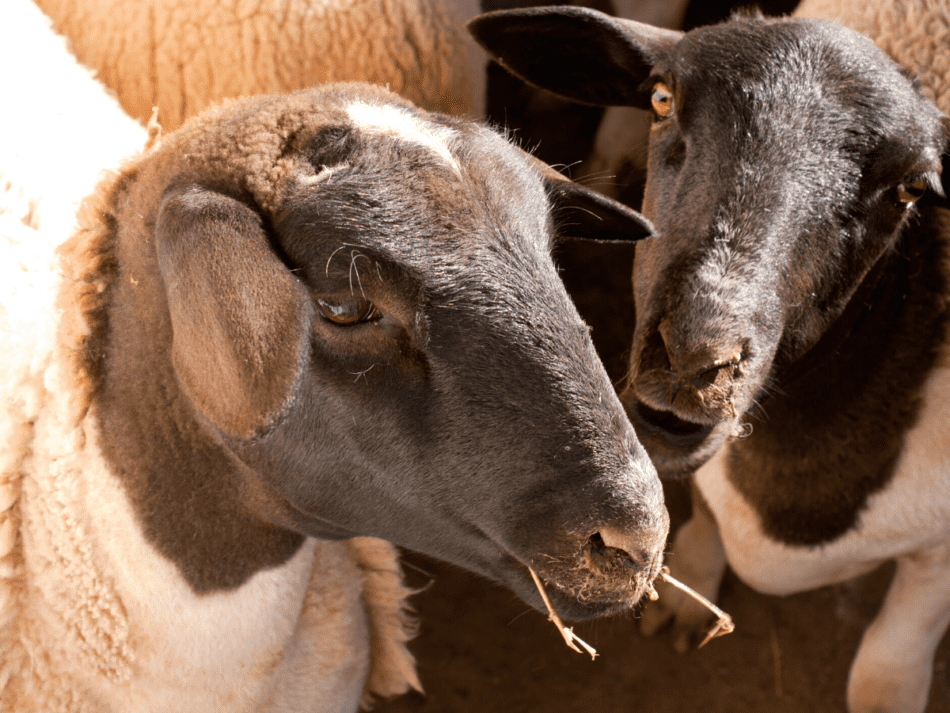
Dorper sheep are polled
Dorper sheep are polled, which means that they do not grow horns.
The interesting part about a polled sheep is that you can cross it with a horned sheep or a sheep that has some horned genetics and still get polled lambs.
Using a polled sire, like a Dorper, with your flock, whether the ewes are horned or just occasionally have horned lambs will depress any horned genetics that you may have but not see in your ewes.
Dorpers have good gains on feed
If you are considering putting your lambs on feed to gain faster, Dorper or Dorper cross lambs have the potential to gain well, up to 1 pound per day when kept and fed inside the barn.
This is the main use of Dorper or Dorper cross lambs in my area.
Sheep farmers are putting the ewes in the barn to lamb then putting the lambs on creep feed to get them growing quickly with the plans to sell the lambs at about 55-60 pounds.
At the auction we send our stock to, these type of lambs bring top dollar, quite often just as much per lamb as you get from selling a 6-8 month old market lamb. It’s impressive.
The Dorper does well in various range and feeding conditions and reacts very favorably under intensive feeding conditions.
Oklahoma State University Dorper Sheep
Local farmers, especially Amish with a bit of pasture to use, love the idea that they can quickly raise the lambs then sell to get a return on their flock more quickly.
Dorper breed was created in South Africa
The Dorper breed was created from a cross in the 1940’s in South Africa. Those hybrid sheep were selected from to form the base of the Dorper we know today. The breed society established in 1950.
If you are interested in the Dorper from a South African point of view, read Dorper Animal Genetics Training Resource, which goes into the breed history as well as current popularity and use.
Resources:
Dorper Sheep Oklahoma State University Breeds of Livestock has the stats on lambing percentages for Dorpers under a variety of management conditions.
